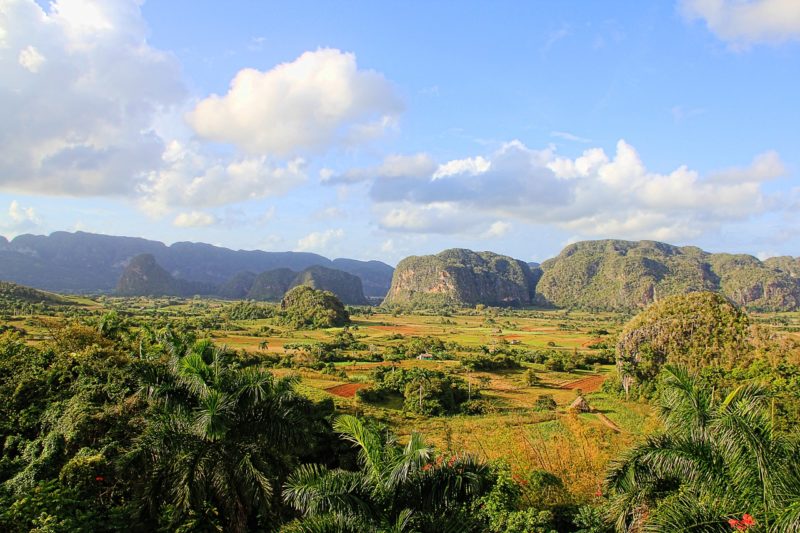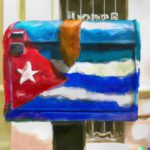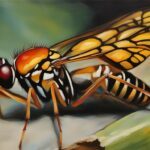Letztes Update: 6. April 2019
“You can’t just plant tobacco, you have got to marry him.”
If you go to Cuba, you have to visit the beautiful Valle de Viñales
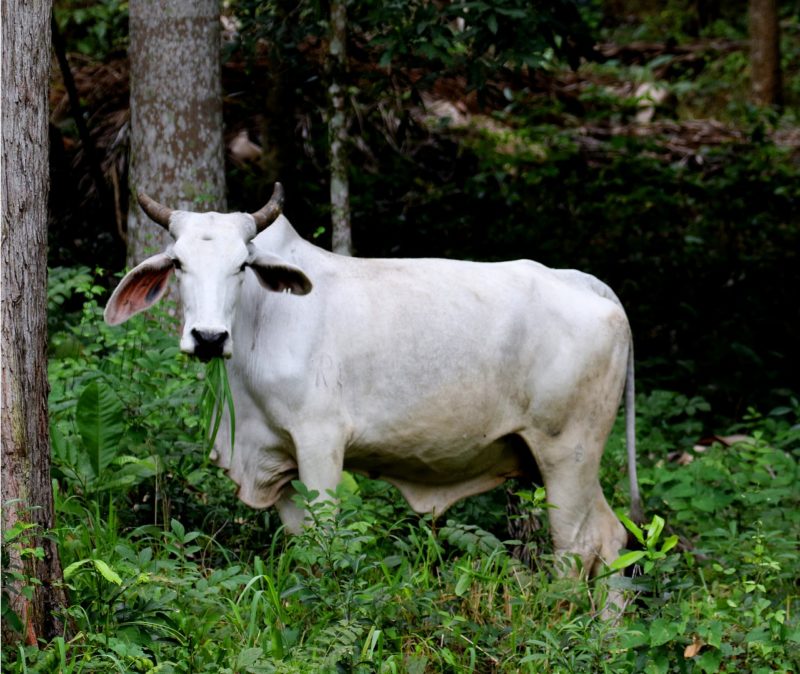
There are a few destinations you must have seen in Cuba: Havana, Trinidad and of course Viñales with the Valle de Viñales, the valley of Vinales. It is one of the most spectacular natural wonders in Cuba, first declared a Cultural Monument by UNESCO in 1999, before finally becoming a World Heritage Site. Originally, the name of the valley comes from the wine that was supposed to be cultivated there, but it did not flourish, so that one returned to the cultivation of tobacco.
The topography of Viñales – or why everyone wants to take photos there
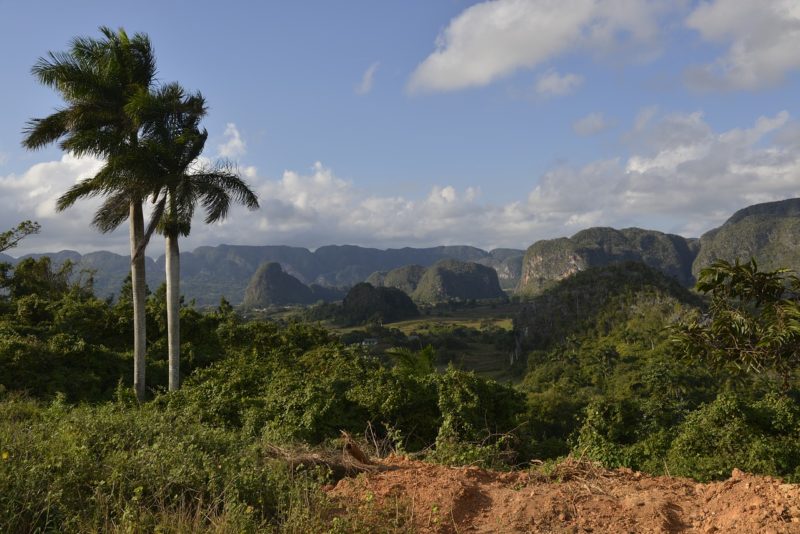
The special thing about the Valle (pronounced “Vayye”) de Viñales are the mountain ridges, the mogotes or elephant ridges that run through the entire valley. These come from limestone caves that were formed 180 million years ago and collapsed over the millennia due to the demineralisation of limestone. All that remained were the mighty pillars, which we now see as mountains. The collapsed caves left behind a wonderfully fertile soil that is ideal for growing tobacco (karstification). Due to vegatation, isolation and the particular soil situation, the Viñales Valley has a unique flora and fauna. There are 20 species that can only be found in the Vinales Valley, such as the Cuban palm fern (Microcycas calocoma). It is a living fossil that has not changed since the Carboniferous. As a special animal species there is a rat-like rodent, the Jutía (tree rat), a porcupine relative.
The History of Viñales
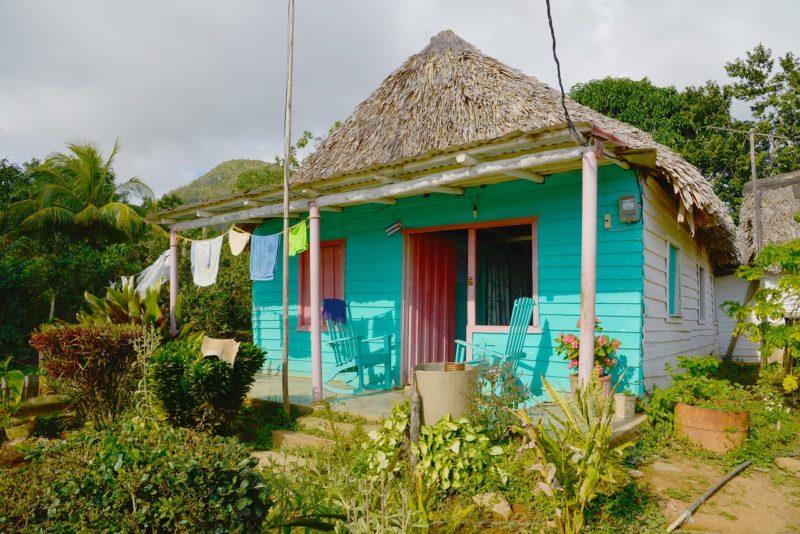
Traditionally, the Viñales area is inhabited by immigrants from the Canary Islands who began growing tobacco there in the 18th century. Without being caught, they were able to grow tobacco without the Spaniards knowing it and, of course, sell it – at that time there was a state tobacco monopoly in the Spanish colonies. Before the Canary Islands, the valley was inhabited by remnants of the Taino Indian population. Viñales only became a settlement at the end of the 19th century and turned into a city in 1878. Today, Viñales is the tenth largest city in the province of Pinar del Rio with a population of just over 25,000, in the very west of the island.
The Tobacco Tradition

The soil in the area is well suited for tobacco cultivation, which has therefore been practised there for centuries in the same way – so that even the cultivation tradition is part of the world cultural heritage.
However, the best tobacco – the one used for the Habanos – does not come directly from the Valle de Viñales, but from the surrounding area, the Vuelta Abajo. Not only is the famous Havana cigar produced here, but it is also the only region in the world where all three components of a cigar (insert, wrapper, wrapper) grow.
There have been many attempts to cultivate the Havana cigars in other regions, not only by planting the tobacco plants but also by exporting the soil. But nowhere is this mixture of climate and soil achieved, which gives the Havannas their special aroma.
Attractions in Valle de Viñales
Viñales
Viñales itself is a picturesque town that does not have many special features. A few restaurants, souvenir shops, the usual. Since a few years there is even an ATM. The first time we were there, around 2012, we had to go to the bank to withdraw money. Due to the touristic location, the prices are a bit higher than in Havana (my personal impression).
The Valley of Viñales
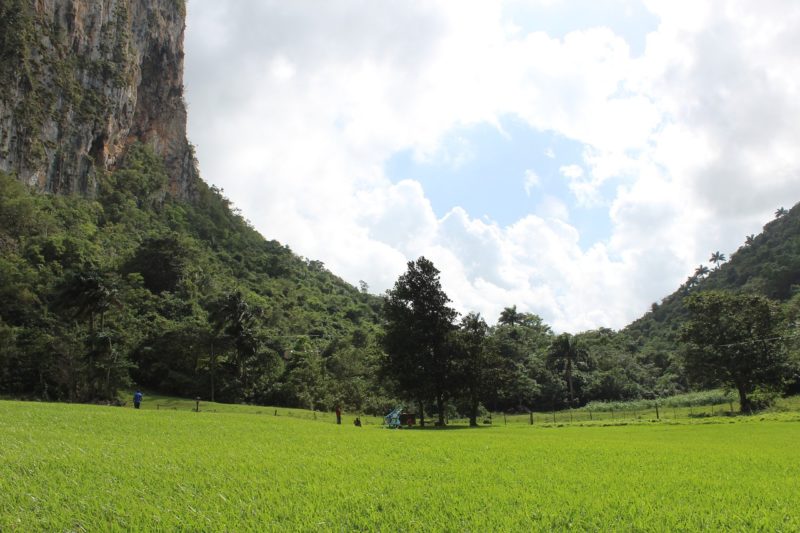
But we don’t go to Viñales because of the city, but because of the landscape, the Sierra de los Órganos nature park (“Organ Pipe Mountains”).
The most spectacular are of course the mountains, which can best be seen and photographed from the Mirador, the classic vantage point. Good vantage points are recognizable by the fact that there are many tourist buses 😉 Of course you can also walk through the valley – if it’s not too hot, otherwise it’s a torture.
The Caves
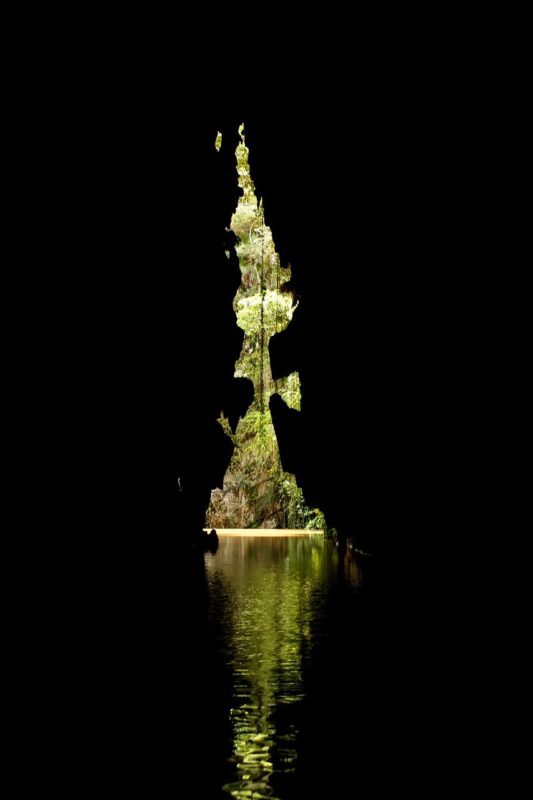
Those who do not suffer from claustrophobia can take a boat tour through the cave system of the valley.
The Cuerva del Indio, discovered in 1920, is an accessible cave washed out by a river – hence the boat tour. The anecdote says that it was the hiding place of a chiefain’s son, who had run away with the daughter of an enemy chieftain.
The Cueva del Indio, the Cueva de San Miguel and the Caverna de Santo Tomás can also be visited.
The Huge Wall Painting
In the Valle de las Dos Hermanas, a small side valley of the Valle de Viñales, there is another sight, a huge wall painting: the Mural de la Prehistoria. Over 120 m high and 180 m wide, the Incarnation is depicted in bright colours. The mural was created at the beginning of the 1960s at the suggestion of Celia Sánchez, a former guerilla and later lover of Fidel Castro. Leovigildo González Morillo, a pupil of Diego Rivera, the husband of Frida Kahlo was entrusted with the implementation.
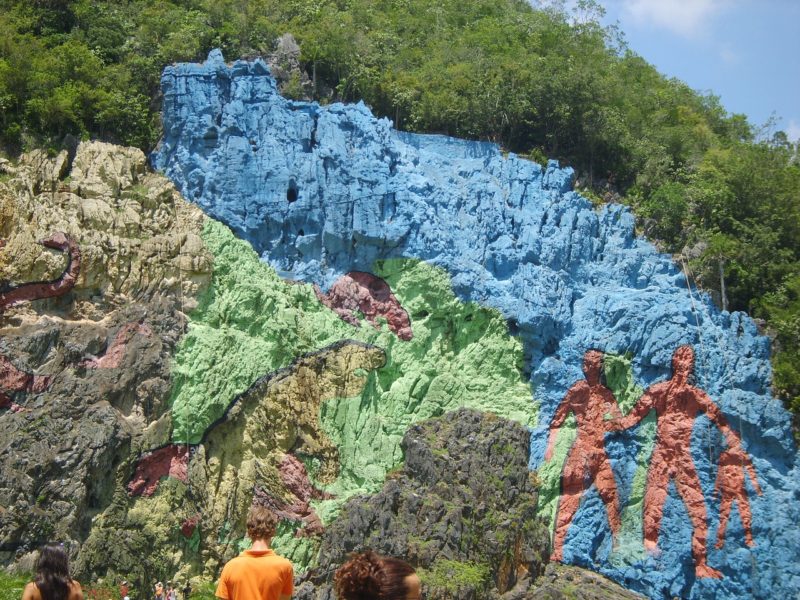
Every 5 years the colors must be refreshed, so that it continues to shine in its bright colors.
Horse riding through the valley
Everywhere in the valley you can ride horses, either on a pasture or in the form of a guided tour. The latter is a bit more strenuous and guarantees maltreated thighs 😉 I have to admit that I left riding to the women, while I sat in the shade with my male comrades-in-arms. In my memory I had a cool beer in my hand – but I wouldn’t swear to that…
Incredible starry sky
Viñales is a small town, far away from any industry and, apart from the street lights, there is no other light. Thus, if you sit apart from the streets or on a roof terrace, you will see an unbelievable starry sky with slightly different star constellations than here. Either you enjoy the stars or – as hobby astronomers – you analyze the exciting constellations. Both a dazzling experience.
And in the evening: to the Casa de la Cultura
And if you want to end the evening, you can visit the beautiful old building of the Casa de la Cultura. There is music and dance, so if you want to move your legs and learn or dance salsa, you are in good hands here.
Beach trip to Cayo Jutías
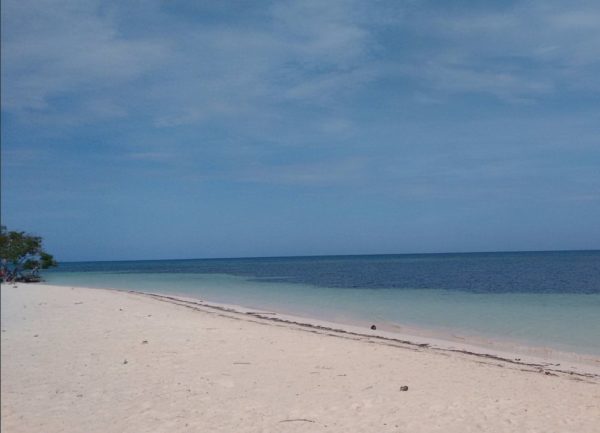
Also the beach visit does not have to come too briefly in Vinales – Cuba, after all, is an island, i.e. the sea is close everywhere 😉 From Viñales you can drive with a rented car or a chauffeur (ask your Casa owners) to Cayo Jutias, a beautiful Cayo with white, fine sand and very shallow, calm water – exactly what the Cubans want: no waves…
Infrastructure is available, there is one restaurant.

When is the best travel time for Vinales?
The Viñales Valley is unfortunately very rainy and even during the best travel season for Cuba – from mid-November to the end of April – there is no guarantee of a rain-free day. So: pack your rain gear and umbrella and remember: in Cuba, it’s still not cold, even if it rains 😉
Conclusion: Viñales is a must-see for your Cuba-Trip
So if you’re planning your Cuba stay, reserve 2-3 days for Viñales. From Havana you can reach Viñales quickly with the Viazul bus, even better by rental car. But reserve an overnight stay on time, because during the season Viñales is literally overrun – there was the story of tourists having to sleep on the street, because all Casas Particulares were occupied. It’s not that bad anymore, but you surely want to sleep in a nice casa or one of the three hotels, so: better save than sorry, reserve on time.
>> The Pinareños, thus the inhabitants of the province Pinar del Río, are considered in respect to jokes as what the East Frisians are for Germany or the Irish for England 😉 <<
Enjoy your Vinales stay,
Dietmar
